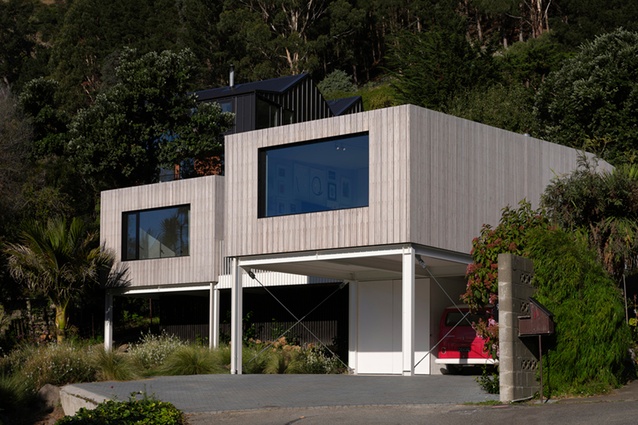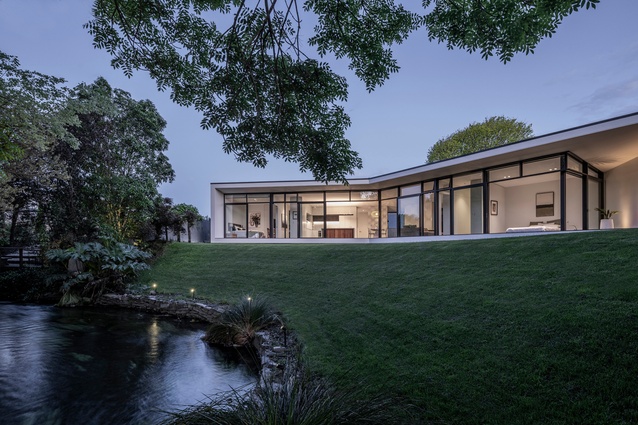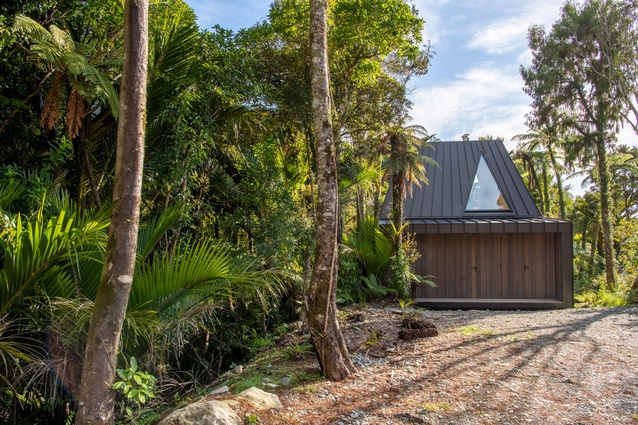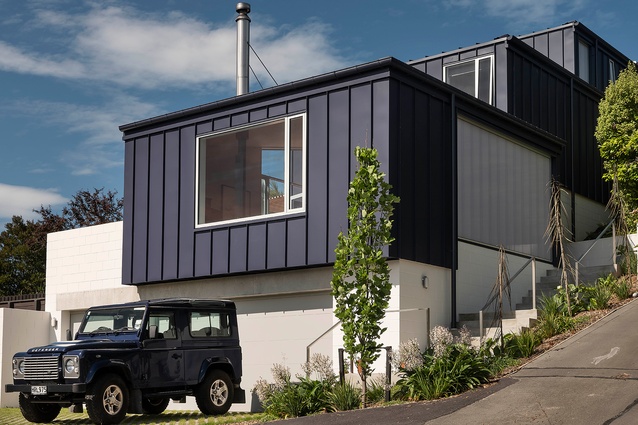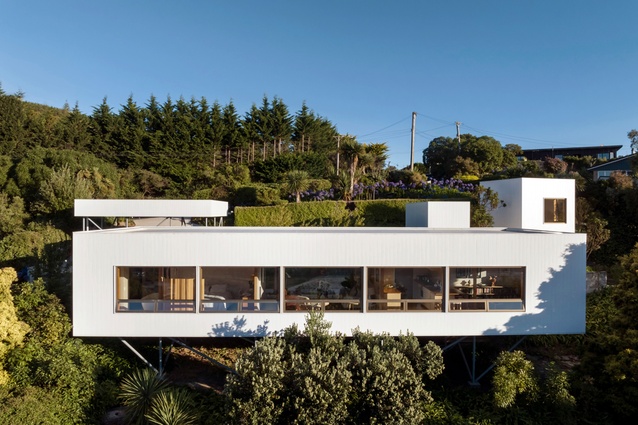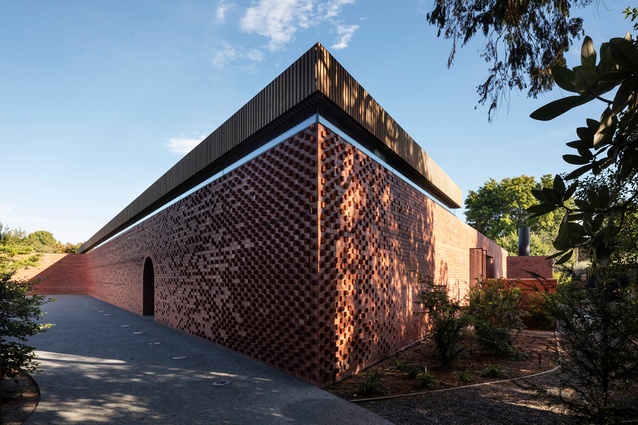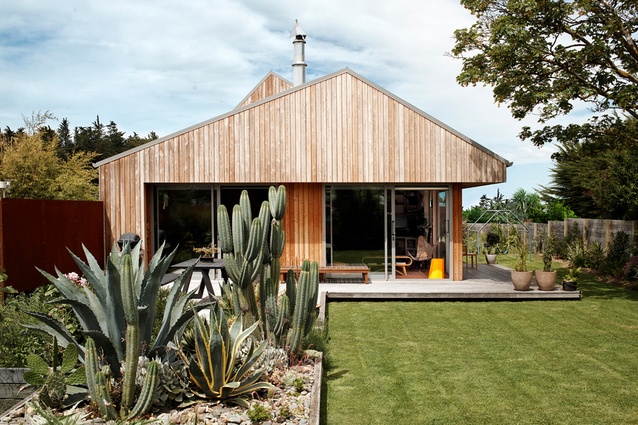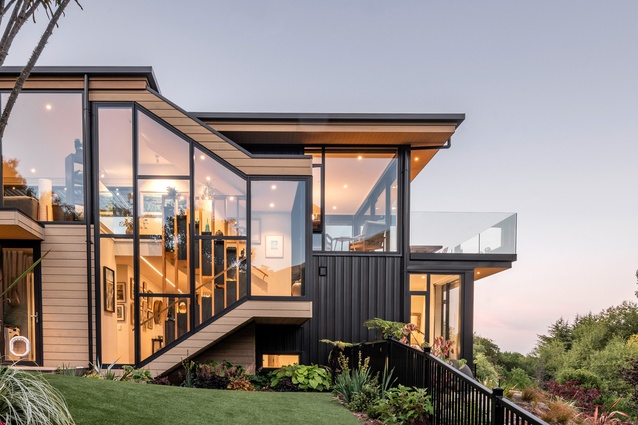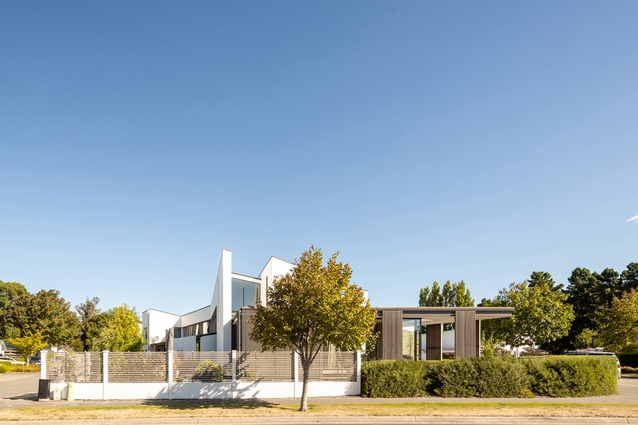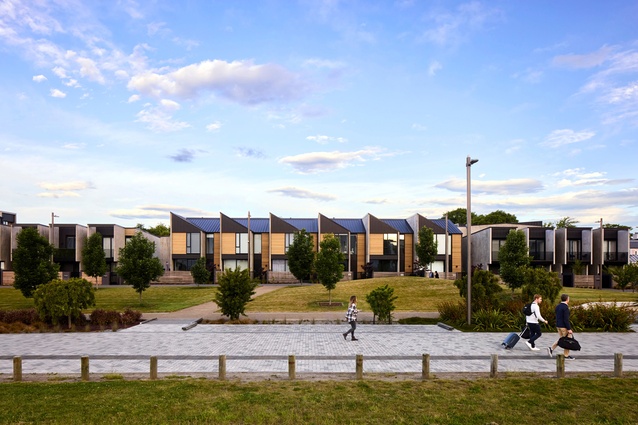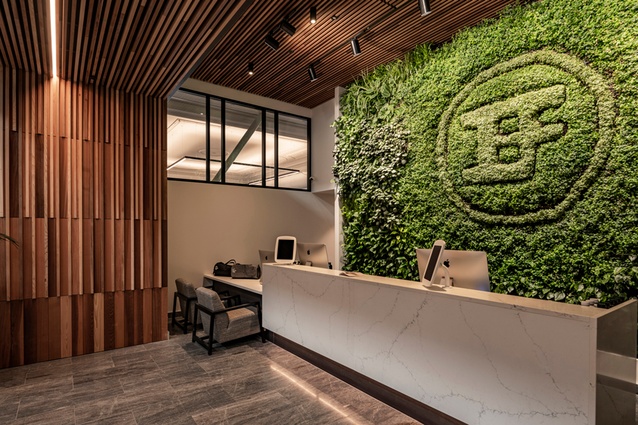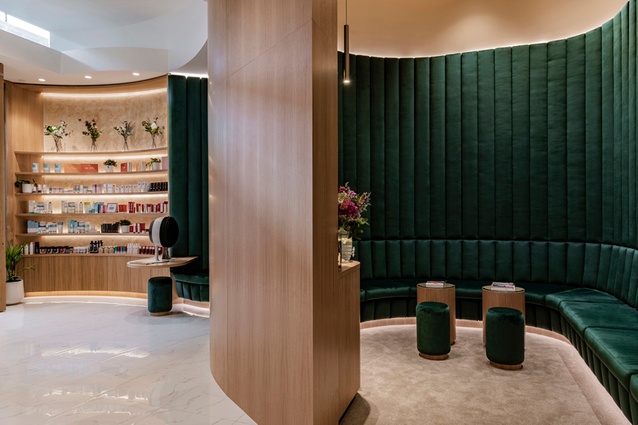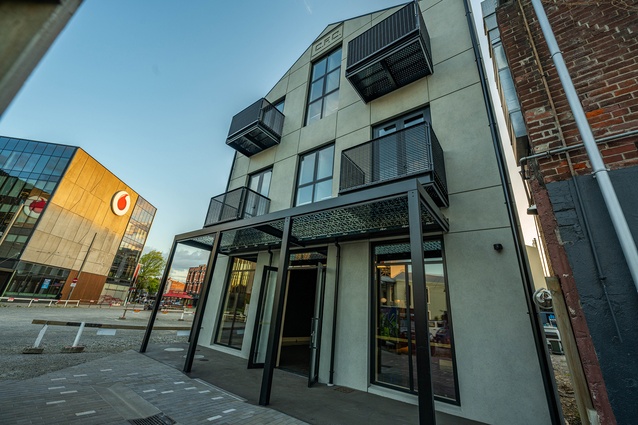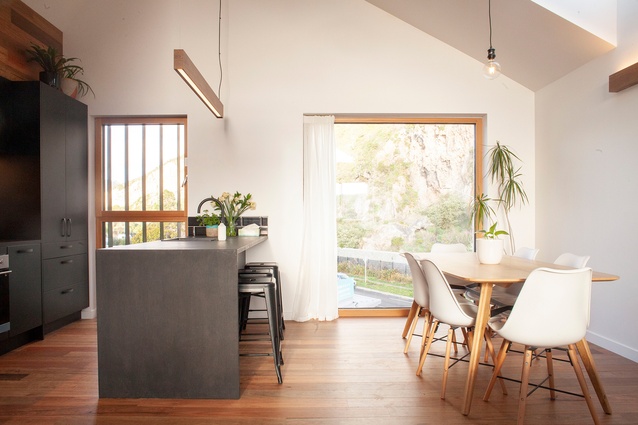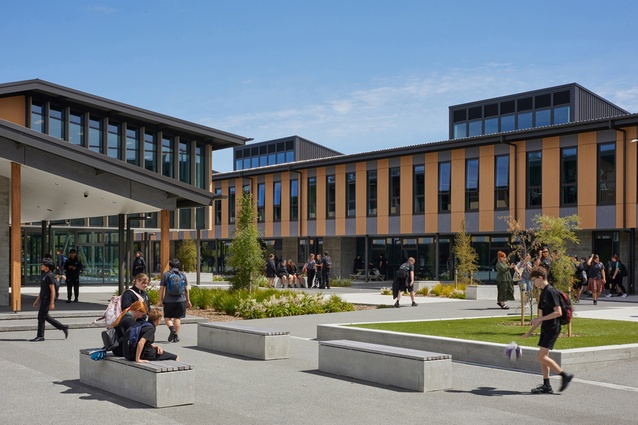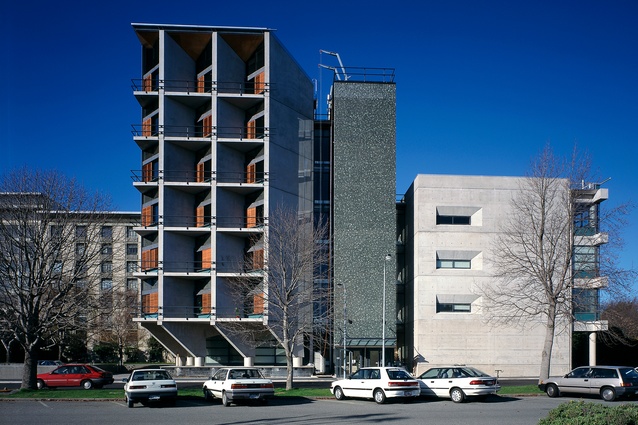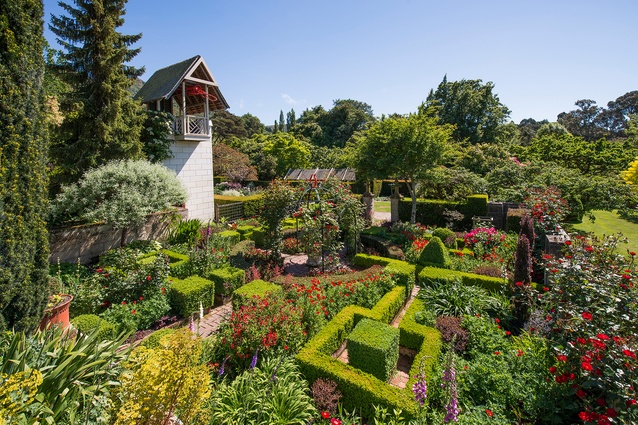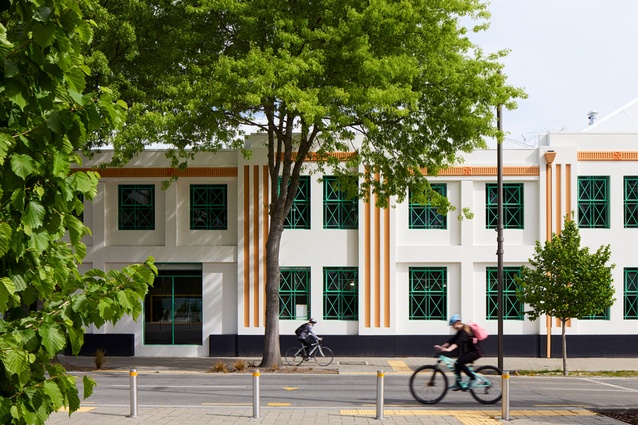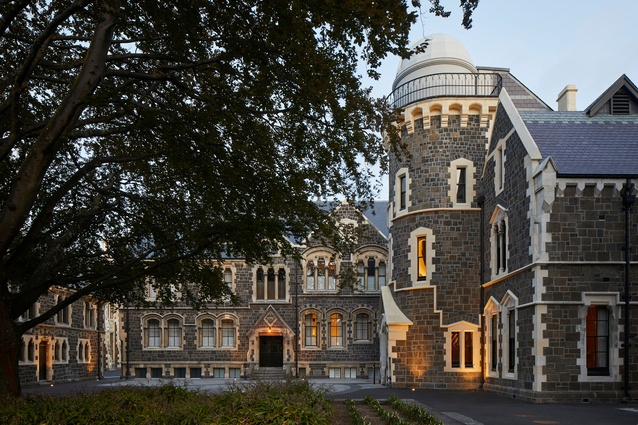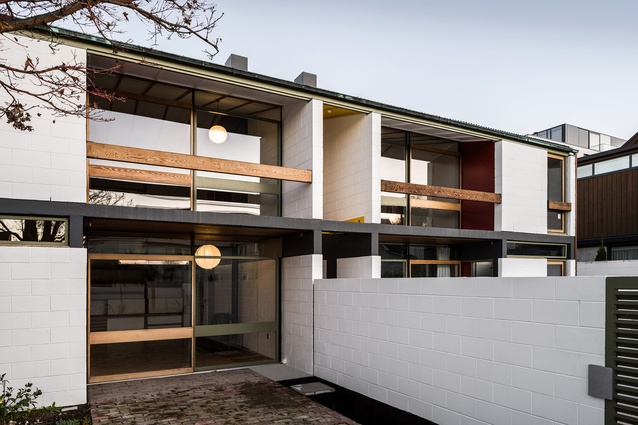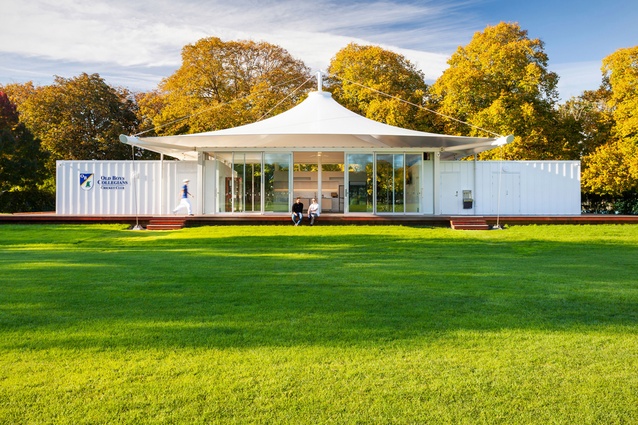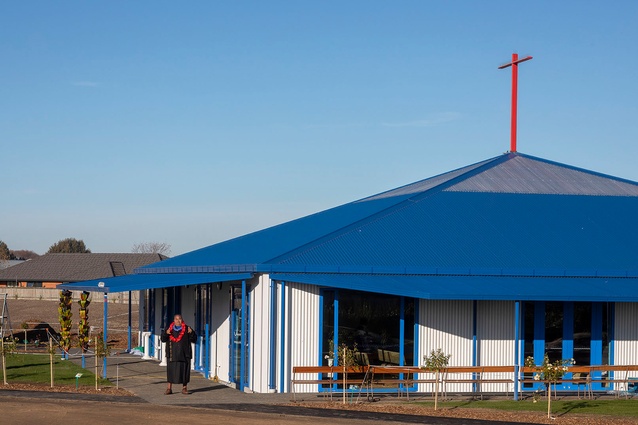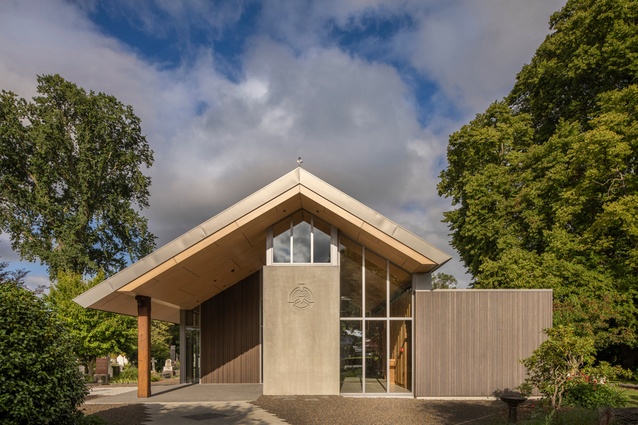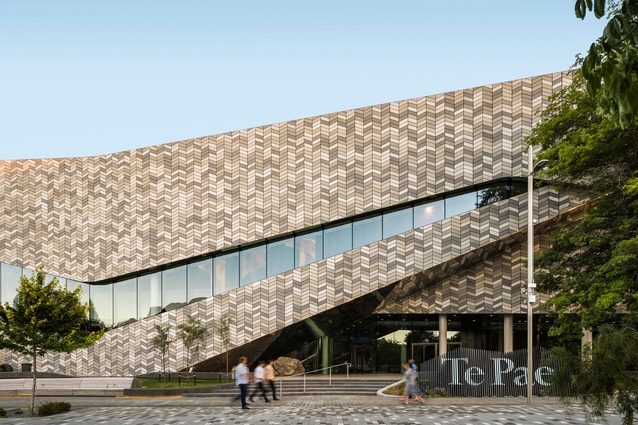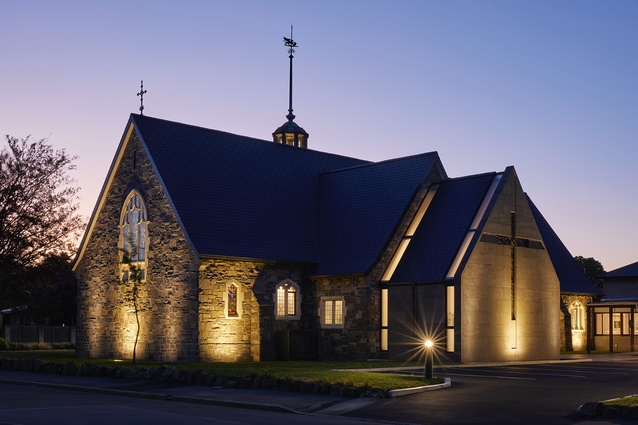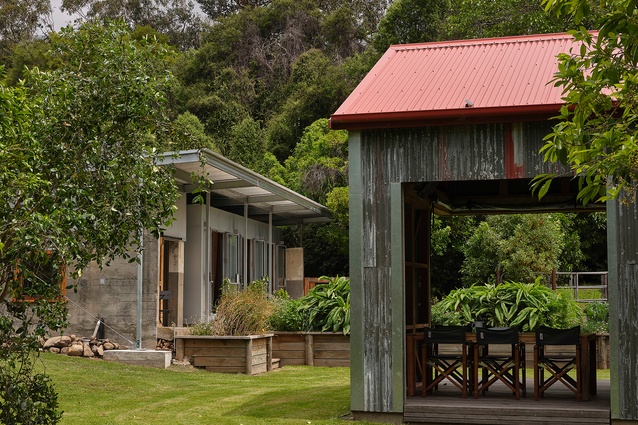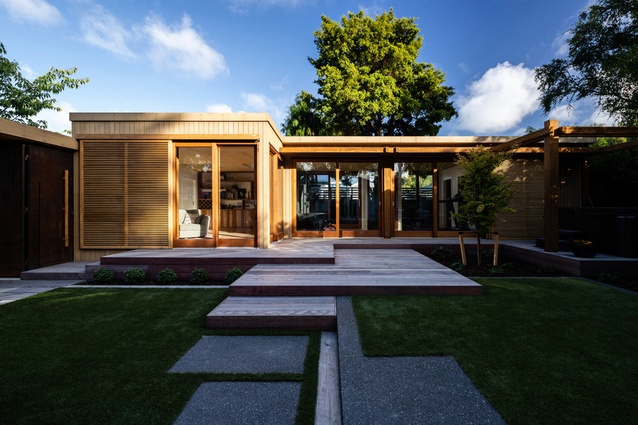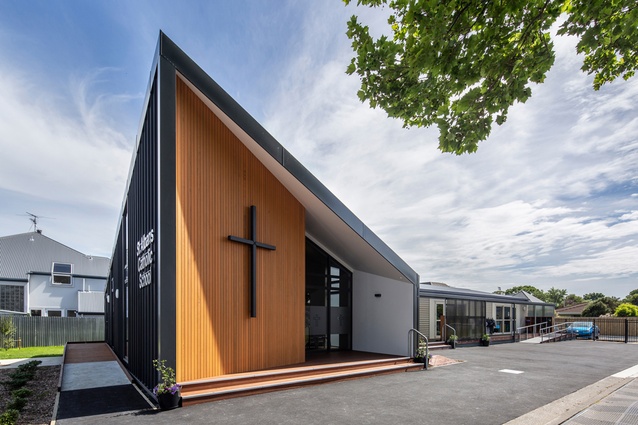Winners revealed: Canterbury Architecture Awards 2023
A diverse range of architectural types amongst the winners showcase the benefits of engaging with architects, irrespective of a project’s type or budget, remarked this year's jury convenor, Craig South.
Thirty-one winners were announced in an ceremony on the evening of 10 May at the Christchurch Town Hall.
Amongst them is the Te Pae Christchurch Convention Centre, a visually arresting piece of public architecture that transforms the inner city streets it is sited on, by Woods Bagot, Woods Bagot NZ, and Warren and Mahoney Architects in association.
Some unusual residences also took out awards, including Apartment 41, a retail site and home created by MC Architecture Studio and a winner in the Commercial category; Dorset St Flats, a sensitive and beautiful refurbishment of mid-century townhouses, by Young Architects; Biv, a small home in Punakaiki by Fabric; and RTA Studio’s Z House, a quirky, bespoke home full of gorgeous details that garnered a housing win.
The Small Project Architecture category was well represented, with four winners that run the gamut from an addition to St Mark’s Anglican Church by Chaplin Crooks Architects to a charming tiny home called The Cowshed by Johnstone Callaghan Architects.
Seven projects won Resene Colour Awards, including the aforementioned Z House, The Observatory Hotel and Observatory Tower, at The Arts Centre of Christchurch, by Warren and Mahoney Architects and Dave Pearson Architects in association, and Triptych, a home by Johnstone Callaghan Architects.
“Being part of the NZIA jury was a real privilege. These projects were all of a high calibre and the passion shown by each of the architects, and their clients, was truly inspiring,” says convenor Craig South of South Architects. “The different approaches architects have had here to sustainability was really interesting and we also enjoyed seeing architects experimenting on their own projects to resolve and then showcase a particular solution. Each diverse entry clearly showcased the immense benefits of engaging with architects, irrespective of a project’s type or budget.”
South was joined by four other judges: Architects Lisa Webb of studio/LWA in Auckland, Ekin Sakin from Christchurch City Council, Dennis Chippindale of co-studio, and lay juror Phil Paterson, structural engineer.
The winning projects are:
Housing
Ocean View Terrace House by AW Architects
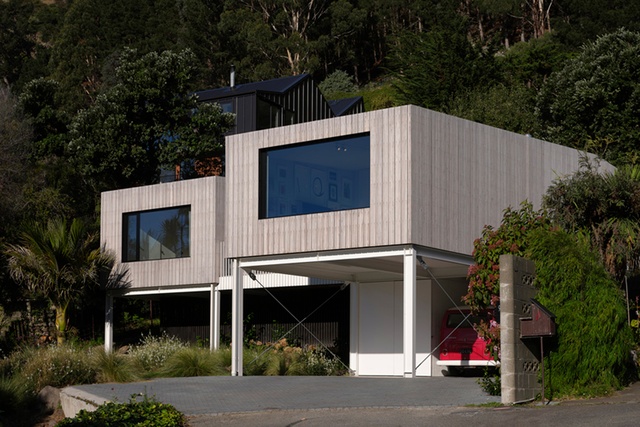
The architect achieved a variety of spaces despite working within the constraints of a prefabrication module and a rational structural and thermal envelope. The steep site and infrastructure constraints are cleverly negotiated, resulting in a compact house with well-defined outdoor rooms that provide the opportunity for living to expand and contract. The house services the needs of a family of five and creates space for interaction and refuge by integrating an outdoor room into its heart. Skilful architecture affords this family a low-energy, low-maintenance, high-delight life.
Stream Side House by Common
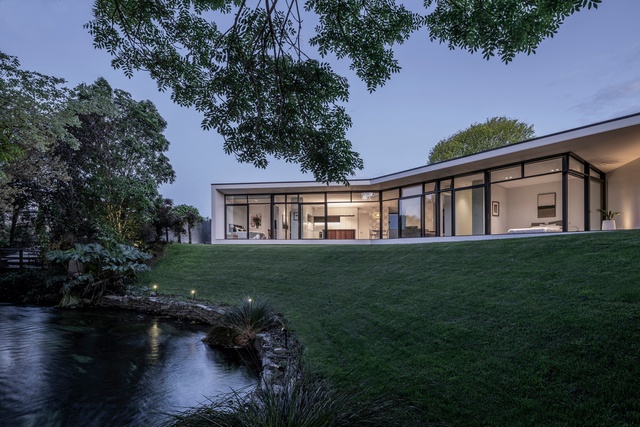
Bold yet sensitively responsive to site, this house is a delight of unfolding experiences, with little of the interior visible from the entrance. Externally, materiality blends into the neighbourhood like suburban camouflage. Entering the heart of the house you are presented with the surprise of the streamside setting. The bend in the stream has been expertly echoed in the angular but curvaceous, sculptural form. Design has been lovingly brought to each element of this home and attention to detail shows the careful thought the architects have lavished on this building.
Biv Punakaiki by Fabric
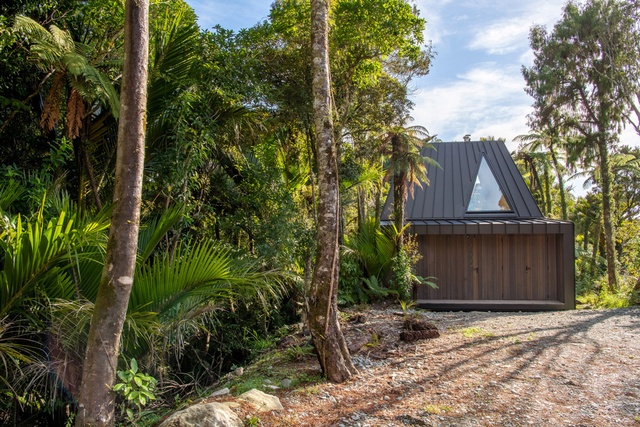
A small built-to-rent hut on a remote piece of land becomes an architectural adventure. Working against the elements, the headwinds of geography and difficulties of remote collaboration, the architects have built something quite unique. Difficulties seem to have resolved into intensity. The object is striking and resonant, speaking to the miner’s hut, but the interiority is something else. The line between inside and outside is well defined, but unclear. Biv is positioned on the edge, in the great West Coast bush. Hinting at predecessors, this building becomes a machine for experiencing the bushland. Cleverly placed apertures, such as the dizzying funnelled skylight, serve to intensify engagement. Being inside and experiencing the outside is magical.
Triptych by Johnstone Callaghan Architects
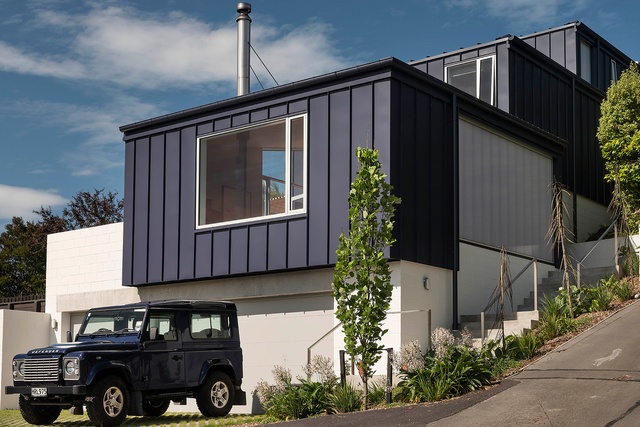
The challenges of designing a family home, one that is sustainable, responsive and made to budget, are at play in this project. Constraint has served to distil the architect’s response — there is unmistakable clarity of thought here. It’s refreshing to see a new, questioning and considered approach to spatial design. The plan and form — evolved out of architectural memories of the site, and responsive to site — were none-the-less innovative. The judges appreciated the care and thought given to the land, neighbours, family and climate, and acknowledge that the architect’s thinking has value beyond the boundaries of the architectural form itself.
Resene Colour Award winner
The use of colour in this project was intriguing and considered, contributing to the coherency of both the form and idea. It is delightful, surprising and difficult to achieve. Fun.
Taylor’s Mistake House by New Work Studio/Tim Nees Architects
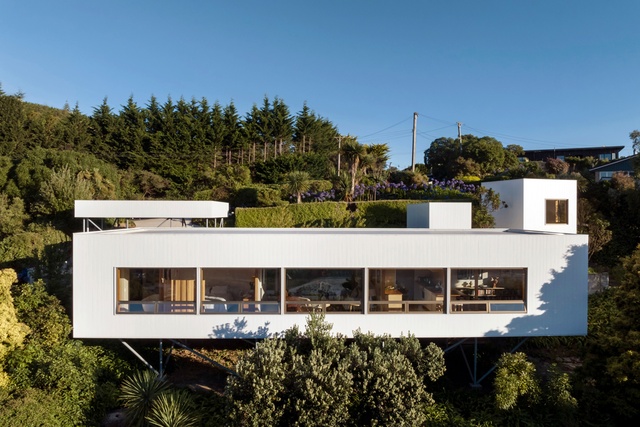
Clearly the home of an architect who cares how every part of their building looks and feels, Taylor’s Mistake House is an exercise in attention-to-detail that is so thorough it is intrinsic, with no component unresolved. Examples of this are everywhere, from the beautifully resolved structure holding up the house to the sculptural downpipes. Planning has been so thoroughly resolved inside that the house only needs a single internal door. Building placement on the hillside site is cleverly handled so the built forms create an amazingly calm courtyard, carefully landscaped to give a relaxed, modern feel.
Resene Colour Award winner
The stark white exterior is like an eggshell: once inside the colour changes to warm, natural, yellow ochre shades of the beach and nature, making you feel comfortable and at home.
Z House by RTA Studio
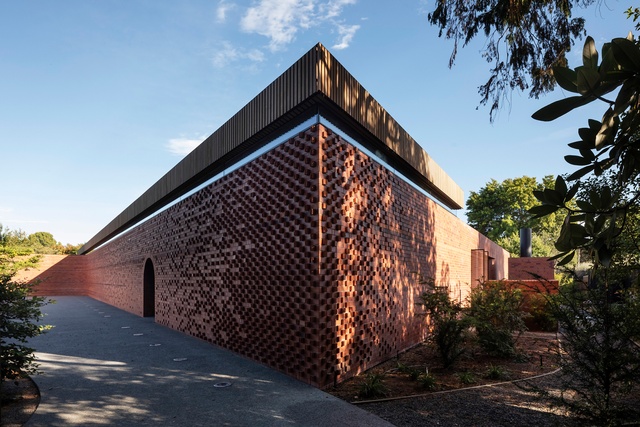
This exceptional home seamlessly merges a young family with their ancestral heritage through a thoughtful material palette linked to historical context. Carefully crafted interconnected spaces provide both visual interest and functional comfort, while original elements reinforce the legacy of the site. The architecture not only houses the family, but also their collection of New Zealand art. Using durable materials such as brick, concrete and timber ensure the home’s longevity and permanence. Meticulous attention to detail and innovative design solutions are evident in every aspect of this extraordinary home, creating an unparalleled living experience that blends contemporary luxury with a sense of timeless elegance.
Resene Colour Award winner
The scheme is thoughtfully composed, with a beautiful interplay of concrete, brick, timber and carefully selected paint and tile colours. The unique character of each bedroom is reflected in the children’s chosen colour palette, which blends harmoniously with the overall design. The result is a home that exudes balance and serenity through its skilful use of colour.
Sandhill House by Sheppard & Rout Architects
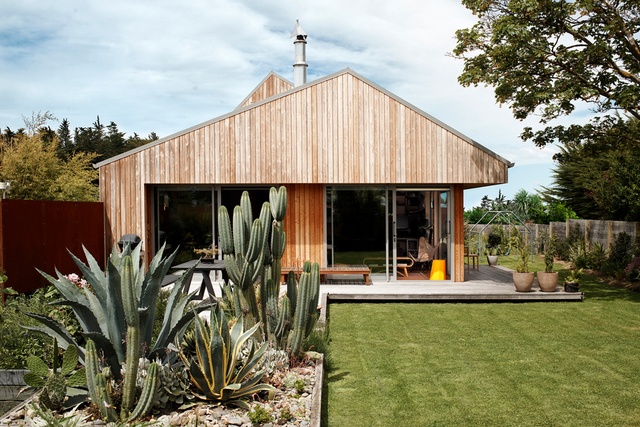
Sandhill House is a prime example of an affordable, space-efficient and aesthetically pleasing timber beach house. The focus on key architectural elements, such as natural lighting, an open floorplan, and efficient use of space, maximises potential while minimising costs. Sustainability practices and the use of cost-effective materials further demonstrate the integration of quality design within budget constraints. The building’s adaptability and anticipation of future needs reflect its practical functionality. Early collaboration with builders and a cost-effective structural solution provided by the engineer resulted in the project’s successful completion within budget and on time.
Resene Colour Award winner
The colour scheme is imbued with a youthful, exuberant spirit. A yellow laundry and highlighted panels that conceal truss fixings create a playful atmosphere, which is perfectly balanced by natural timber finishes. The resulting composition is a celebration of colour and materiality, blending functionality with a sense of joy and delight.
Flockhill Homestead by Warren and Mahoney Architects

The design prioritises longevity, with the aim of creating a home that will be enjoyed by multiple generations. The entryway creates a sense of compression that gradually releases upon moving into the living space, where an exceptional view of the surrounding landscape is revealed. The positioning of the home maximises the view down the lake, with all living spaces and bedrooms oriented to take advantage of it. Bedrooms are nestled behind the living space to ensure privacy, with a sheltered patio providing seamless indoor-outdoor flow. The use of local timber and concrete further connects the home to the land, ensuring it will blend into its surroundings over time. The single-pitched roof is a simple yet elegant feature, while verandahs along each side blur the boundaries between indoors and outdoors.
Hillsborough House by Wilson & Hill Architects
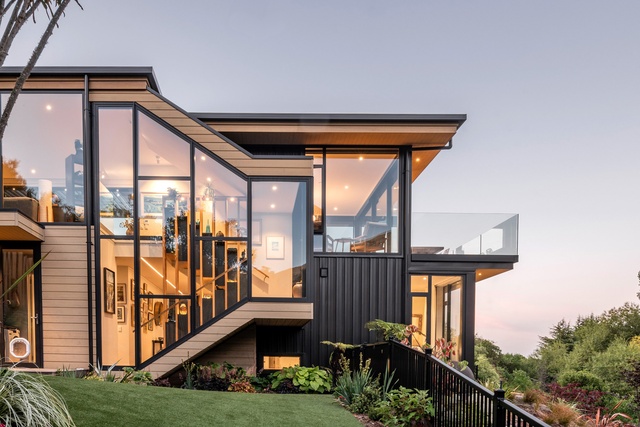
The design of this home is truly remarkable as it seamlessly integrates with its natural setting. Each separate living space is carefully crafted to cater to varying times of day and occasions, providing a truly personalised experience for the occupants. A stone wall that pays homage to the nearby hill makes the dwelling an integral part of its surrounding environment. The staircase is another noteworthy feature that offers breath-taking valley views. Additionally, hidden storage behind the library bookcase adds an exciting element for the grandchildren to enjoy. This sensitive design creates an exceptional living experience in harmony with nature.
Housing — Multi Unit
Seager Park Residences by AQA Alessandro Quadrelli Architetto
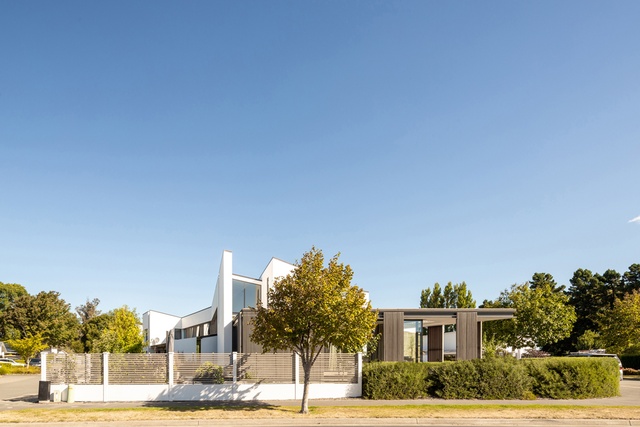
Seager Park’s 11 residences are successfully moulded to their context between a quiet street and public reserve. The key design response to the site is to utilise angles and play with two types of units to create a non-monotonous rhythm and visual interest. This also afforded the architect the ability to curate views from the street, provide individuality to each unit and downplay garages. The units’ dual aspect provides options of interaction and retreat. The complex terminates with the lightweight pavilion of the head unit at the street corner, providing a warm welcome.
Fletcher Living - Worcester Terraces by Sheppard & Rout Architects
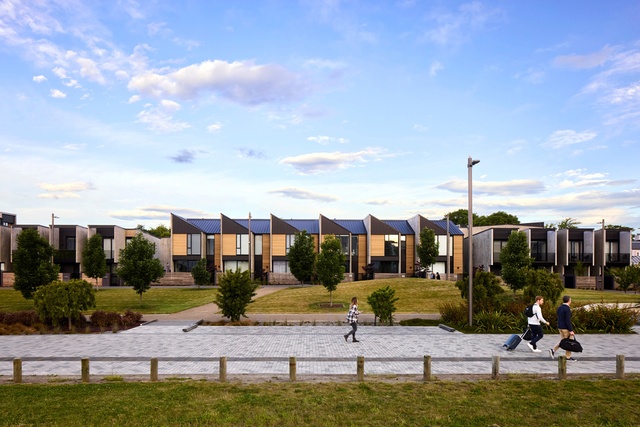
The architect rises to the challenge of designing in a typology that’s still new for Christchurch, and the results are compelling. The design responds skilfully to its prime central city location by creating a courtyard block and presenting strong street edges. Opportunities are created for glimpses into the complex, its refined material palette and play of planting. The fruits of collaboration between the architect and wider design team are evident in the seamless integration of landscape and architecture, providing a fine balance between privacy and interaction while successfully navigating the challenges of service spaces, fire separation and on-site car parking.
Interior Architecture
IHF Health Club Fitout by Wilson & Hill Architects
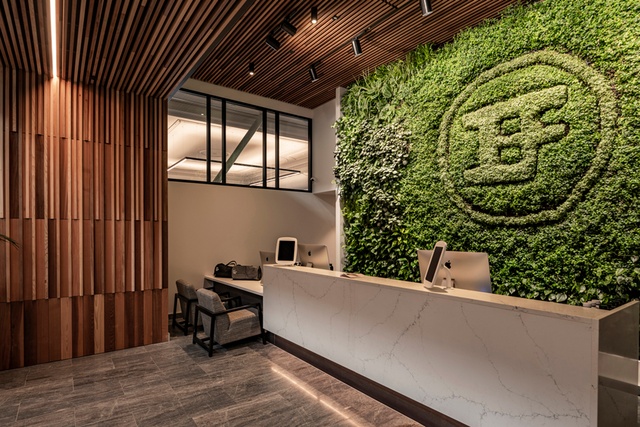
This gym’s design successfully integrates high-end finishes with heritage features, resulting in a space that is both elegant and practical. By engaging patrons with the bustling city street below, it creates an inviting environment that encourages regular use. The design has galvanised the mall floor, attracted additional tenants and added vibrancy to the space. This is a remarkable example of how architecture can transform a space — it’s not only visually appealing but also highly functional and contextually responsive.
Lovoir Fitout by Wilson & Hill Architects
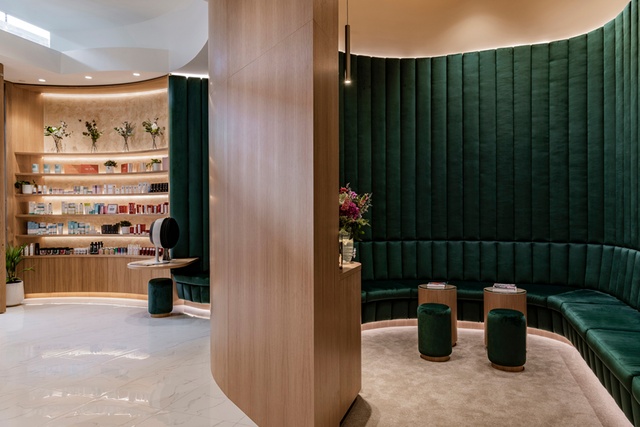
This project is a carefully considered fitout of a commercial space within a busy mall. The judges were impressed that the architects navigated the commercial realities of the mall to create a ‘wellness’ zone, underscoring the value that architecture brings to both client and context. The threshold between public space and retreat is well-considered. The architect has curated this sense of retreat as a series of spaces, thoughtfully manipulated with colour, volume and texture to take the spa customer on a journey of increasing sanctuary. The treatment rooms have a tranquillity far removed from the busy mall outside.
Resene Colour Award
The considered use of colour is integral to the success of this space. The architects chose a scheme that resonates with the client’s brand in a refreshing and particular way. Colour was deployed in contrast to the raw, natural clay plaster to enhance the spatial manipulations that define activity zones. The result is quiet, but clear.
Commercial Architecture
Cotters Building by A E Architects
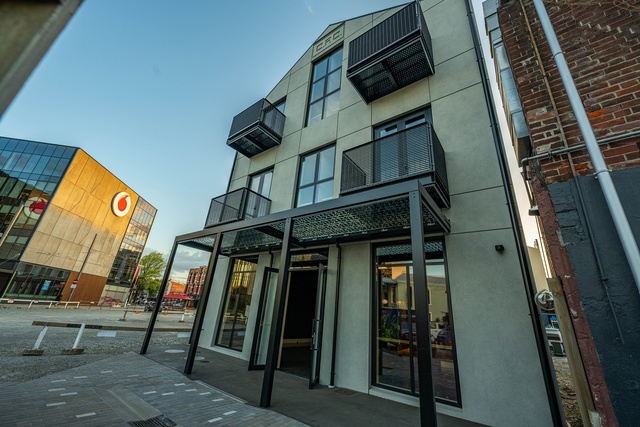
This project celebrates memory, heritage and pride. The architect and client have given a heritage façade a new lease on life, while providing design clues to future neighbouring buildings. The decision to re-create the ground floor central arcade evokes the memory of the former building on the site, adding depth to the visual delight of the retained façade. The design is rich with texture and variety of spaces. It successfully engages with both the main street and lane behind, creating joyful opportunities for vibrant interactions in the near and distant future.
Apartment 41 by MC Architecture Studio
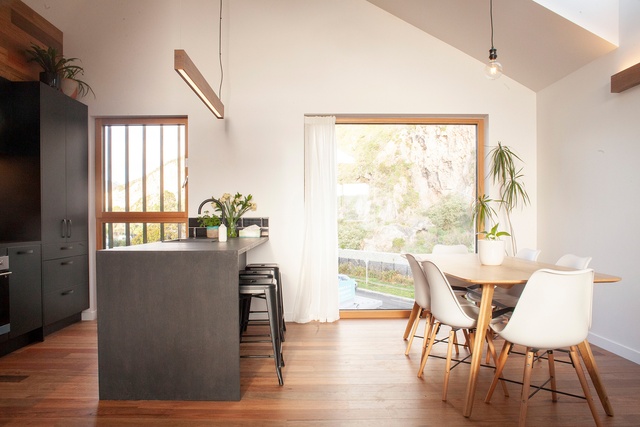
This development presents a commendable relationship between the architect and developer, as it displays an earnest effort towards a truly sustainable approach. A mixture of commercial and residential, the pinnacle of the project is the upper-level residence, which incorporates passive-house principles. The balcony is a delightful feature that fosters interaction with the commercial spaces below, while the corten steel façade adds an industrial touch. This development is a testament to the possibilities of innovative and sustainable design when we all work together.
Education
Te Aratai College by Architectus
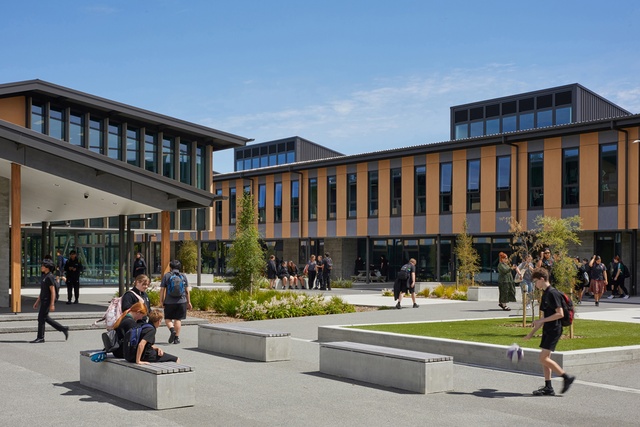
One of the last redevelopments under the Ōtautahi Christchurch schools Earthquake Repair programme, this transformative project has not only shifted educational architecture to the next level, it has also created a facility for the local community. The two-level interconnected learning areas are especially well considered, allowing a diverse range of pedagogical approaches. Arranged around a light-filled circulation atrium, shared, collaborative learning spaces respond to their adjacent, specialist learning spaces with an efficient design that lifts the soul. The dramatic change this campus has made to the local streetscape is extremely positive. From its welcoming entrance to attractively developed external areas flanked by cloistered overhangs echoing the Oxbridge quadrangle architecture, this school engages with its community.
Enduring Architecture
Erskine Building, University of Canterbury (1998) by Architectus, Cook Hitchcock, Sargisson and Royal Associates in association
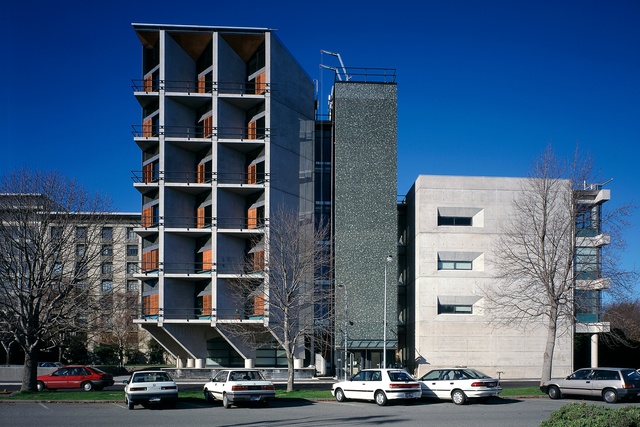
The Erskine Building is an enduring example of exemplary architecture at the University of Canterbury. Completed in 1998, the building draws on the original campus developed in the 1960s and consists of two distinct zones of learning — the academic towers for staff and postgraduate research, and the teaching wing for undergraduate studies. Careful use of materials and construction methods, along with manually operated mechanisms for sun and ventilation control, ensure the building remains a valuable academic and social hub for the university community.
Ōhinetahi (1977-2015) by Sir Miles Warren and John and Pauline Trengrove
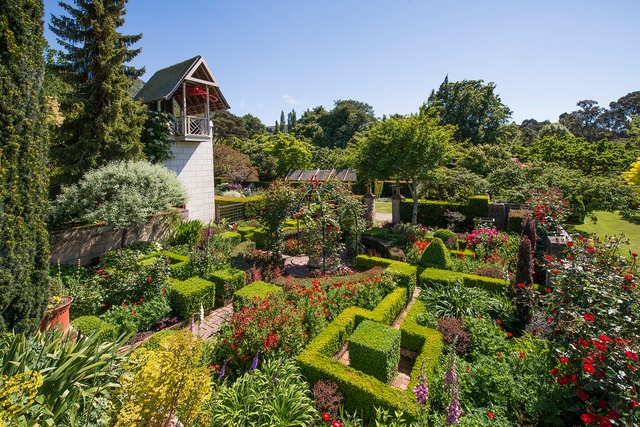
A project that embodies years of effort and inspired vision from Sir Miles Warren and his onsite team. This site is one of the rare gems that possesses an intangible quality of mana not often seen from the architectural fraternity, leaving an indelible taonga for the region and visitors alike. The home and its surroundings engage with each other in a dynamic relationship, seamlessly integrating with the environment and celebrating its natural beauty.
Heritage
St Andrew’s at Rangi Ruru by Fulton Ross Team Architects

St Andrews at Rangi Ruru, a historic Presbyterian church relocated in 1987, has undergone seismic strengthening, all while preserving heritage. The project retained the native timber interior, repaired the weatherboard cladding, inserted steel elements as unobtrusively as possible, and celebrates the original stained-glass window. The building is a heritage asset and one of the few of its age to survive the Canterbury earthquakes intact. Its restoration ensures continued use as the school’s chapel and assembly space for generations to come.
The MED Building by Three Sixty Architecture
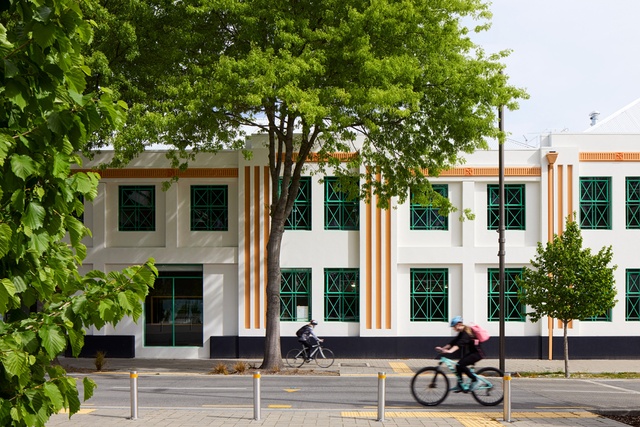
It’s wonderful to see our old buildings retained and given new life. This bold example of adaptive reuse has taken an under-loved Art Deco industrial building and turned it into a fun-filled retail and workspace. The interiors make the most of the raw, industrial structure and machinery. The way the building has been laid out means that each workspace is entirely unique in its spatial experience, with great use of the building’s old elements. The exterior has been lovingly repaired and restored, with bright new colours giving a fresh appearance. Minimal entrances puncture the solid form, allowing it to activate the street frontage.
The Observatory Hotel and Observatory Tower, The Arts Centre of Christchurch by Warren and Mahoney Architects and Dave Pearson Architects in association
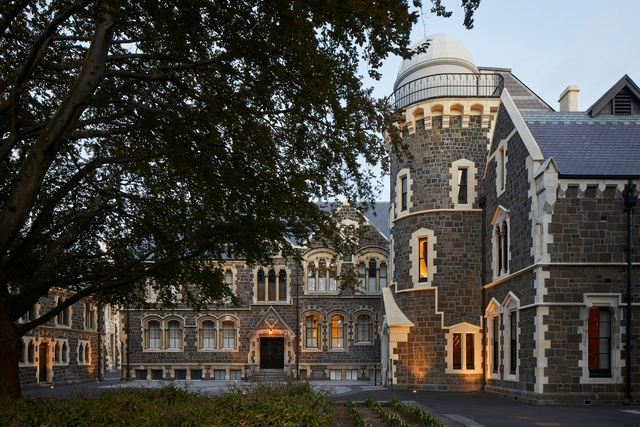
Approaching the earthquake-wrought rubble of a cornerstone heritage building in a cornerstone heritage precinct is a responsibility not to be taken lightly. Reconstruction of a building such as this requires a level of respect that borders on devotion, and the project team has clearly taken this approach. The care taken and tireless archaeological response are heart-warming. But beyond heritage, this building is an inspiring example of what can be achieved when a project is driven by an ambitious and innovative brief, and a strategic understanding of context. The architect’s response is thoughtful, respectful and injects vitality into an old building. More than that, the hotel is the cornerstone of a new, revitalised urban precinct. Inspiring.
Resene Colour Award winner
The use of colour in this project carefully underscores a respect for the building’s heritage qualities while maintaining a contemporary sense of style. Colour is thoughtfully deployed as a way of defining the new and luxurious, contributing to the transformation of the original stone building and marking a transition from old to new.
Dorset Street Flats by Young Architects
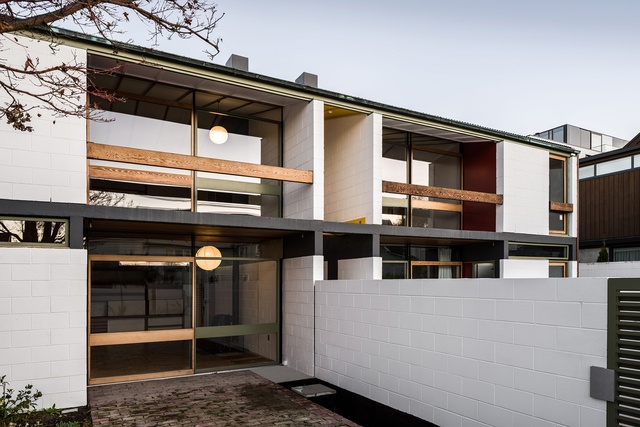
The renovation of this iconic heritage building demonstrates a thoughtful approach that respects the original design and architect. Seismic strengthening and an additional structure don’t disrupt the original aesthetic. The team’s attention to detail and commitment to respecting heritage enables a local treasure to endure. This is an exceptional example of how we can honour our past and ensures the building remains a source of inspiration and joy for future occupants.
Resene Colour Award winner
Continuing the original architect’s use of colour in building elements and soft furnishings allows the residential development to remain nestled within the era of its creation. Subtle touches of colour pay homage to the building’s heritage and provide a sense of continuity that is both comforting and inspiring.
Public Architecture
The Jim Wakefield Pavilion by Athfield Architects
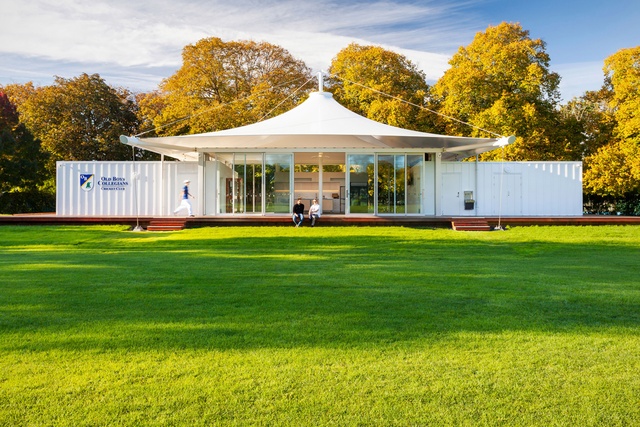
Like a cricket player dressed in their whites, the Jim Wakefield pavilion celebrates the joys of summer sport, and shows how a small building can still be something that adds to its community and neighbourhood. Simple architecture has been placed at the corner of the sportsground, so it doesn’t compete with the park’s open space. The transparent clubhouse form is surmounted by a twin-skinned fabric structure echoing the appropriate, tent-like architecture of Hagley Oval and the MCC in London. By placing the structure on a deck floating at sitting height above a gentle grass mound, the building provides elevation and elegantly avoids the out-of-place appearance of a typical, two-storeyed cricket pavilion.
Fonua Mana by Bull O’Sullivan Architecture
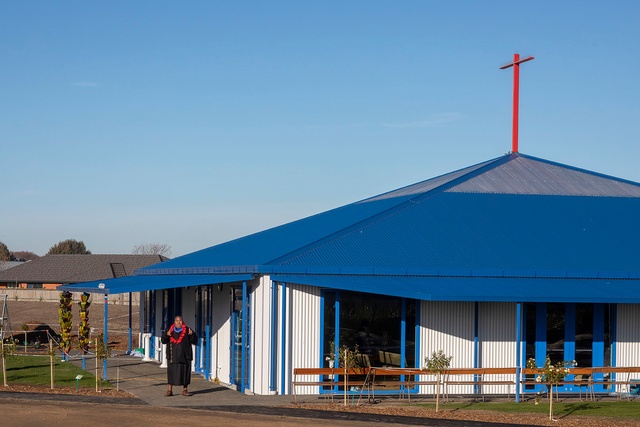
The architect describes this project as ‘ruthlessly simple’. The building is indeed an extraordinary feat – the ruthless execution of architecture at a budget level not often explored by architects. Architecture with this cost constraint requires rigorous decision making for sure. It also requires generosity. In the beginning, there was a gift of land, then the gift of a story. The architect’s response, also a gift, is a building so simple, so resonant, and so full of love it is hard to comprehend. How can something so simple, so low cost, be so powerful? There is a lesson here for us all.
Methven Library by Crosson Architects

This project looks deceptively simple from the street where it sits comfortably in its rural community. Materials and forms nod to the practical agricultural or modest residential buildings of the area. The familiar form and materials are composed in a way that achieves a civic presence. The multiple functions of the building are organised logically along a central corridor. However, the central corridor is more than a simple circulation device. It is used as a sculptural surprise, with its angular path and expressed junction of the roof gables providing a special spatial experience.
Holy Trinity Church, Avonside by Tennent Brown Architects
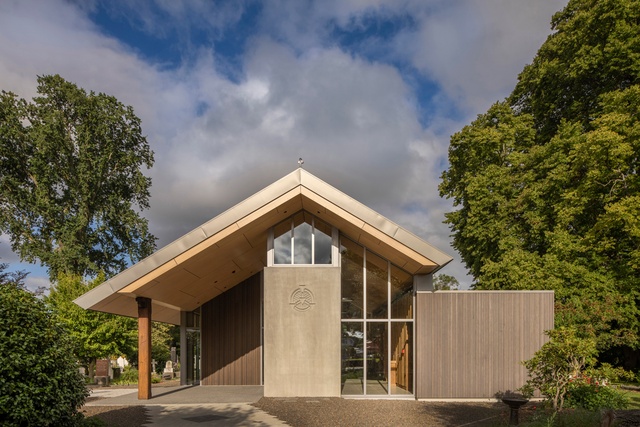
The rebuild of this church is a testament to the artful balance between preserving history and creating a modern space that meets the community’s needs. The project reuses existing timber beams that incorporate the original architect’s artwork, while creating additional volume and more intimate spaces that encourage reflection and contemplation. The addition of a new café space that engages with the church’s interior creates a welcome opportunity for community connection, while respecting the neighbouring cemetery. The resulting space honours the past, embraces the future and demonstrates a thoughtful approach to architectural design — it considers both historical significance and contemporary needs.
Te Pae Christchurch Convention Centre by Woods Bagot, Woods Bagot NZ and Warren and Mahoney Architects in association
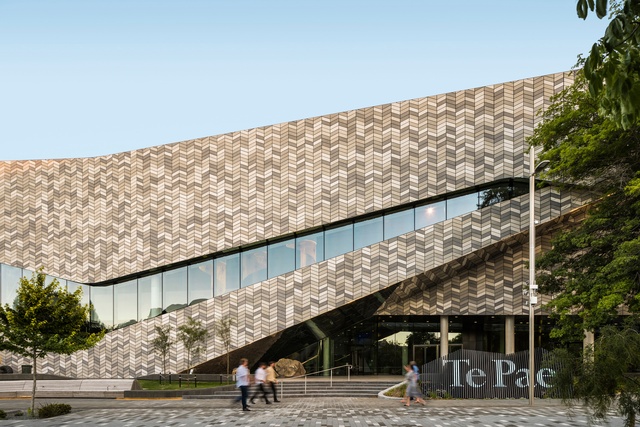
The Convention Centre’s re-build represents a remarkable achievement, seamlessly integrating boutique and large-scale design principles with a rich cultural narrative. The Centre now stands as a landmark, serving as a bridge between the Cathedral Square’s periphery and the Ōtakaro-Avon River precinct. The team’s meticulous attention to detail, thorough planning and unwavering commitment to cultural respect, have birthed a breath-taking space that fosters public engagement and pays homage to the physical and cultural environment. The project is a testament to the team’s ability to create a functional convention centre that remains deeply anchored within its place, offering an immersive experience for all who enter.
Small Project Architecture
Chapel Addition - St Mark’s Anglican Church, Opawa by Chaplin Crooks Architects
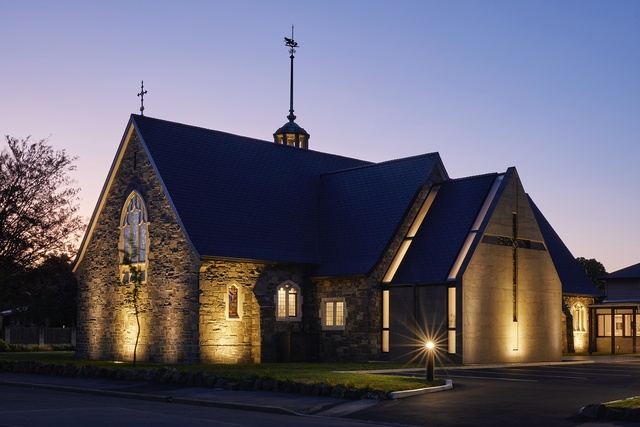
This small addition to St Mark’s Church is an essay on how new architecture can fit comfortably alongside older buildings. The architect’s choice to use a similar material palette, but detailed in a modern way, is key to the chapel’s architectural external dialogue with the older church building. The attention to detail, especially to the exterior, is simply stunning – every stone has been given the care and love this project needed to be successful. The chapel’s interior blends perfectly with the newly renovated church interior, providing an excellent space for silent reflection. Marking the amalgamation of two churches, the crowning joy of both interior and exterior is the stained-glass window. Salvaged from the sister church following the earthquakes, its expertly resolved proportions look perfectly at home in the new location.
The Cowshed by Johnstone Callaghan Architects
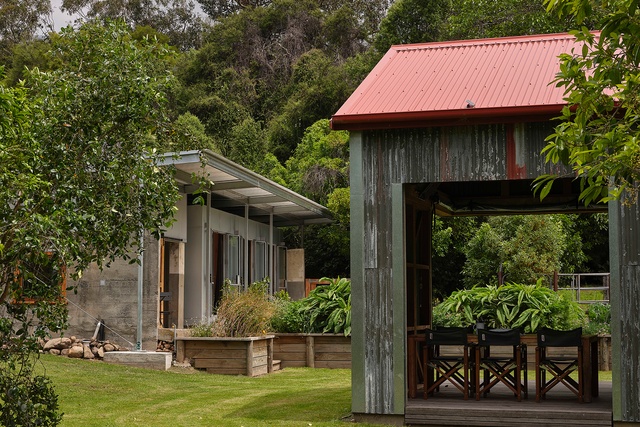
The Wainui cabin project represents an intriguing example of the harmonious coexistence between rural contextual sensitivity, functional sustainability, and architectural innovation. Overcoming the construction challenges inherent in a remote site, the addition of a small, three-bedroom cabin to an existing one-bedroom dwelling features flexible ply-lined walls and ceilings, rough-sawn macrocarpa flooring and Zincalume-clad exterior walls. Steel joinery with polycarbonate panels enable natural ventilation and diffused light. The design thoughtfully preserves the concrete perimeter walls of a former cowshed, now transformed into a lantern at night. A sustainable approach is employed with solar panels, well water and a septic system. This project is an exemplary illustration of balance between a pragmatic yet elegant design philosophy, echoing the spirit of its surrounding rural context.
Totara Pavilion by MC Architecture Studio
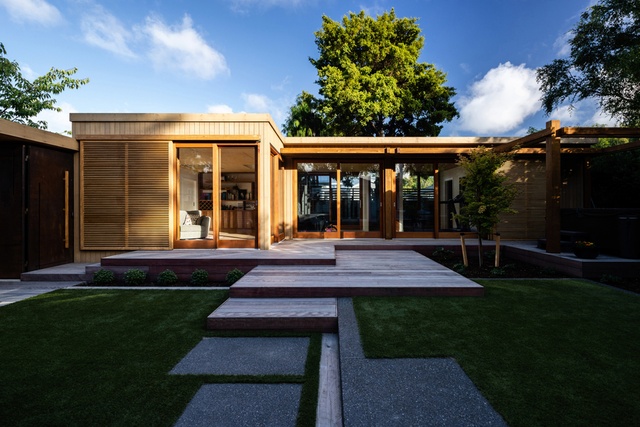
The Totara Pavilion is a subtle and inspiring example of a design philosophy that celebrates health and wellbeing, showcasing the interplay between architecture and landscape. Drawing inspiration from Japanese landscapes, the pavilion features a timber-framed courtyard/walkway, replete with small steps and decking, enveloping a majestic totara tree. Floor-to-ceiling glazing invites the outdoors in, with the exterior employing vertical timber elements to blur the boundaries between pavilion and garden. The interior utilises soft timber elements, crafting a holistic vision of wellbeing. This small addition provides a serene courtyard space for sheltered outdoor living and stands as a testament to the power of seamless connection between building and landscape.
St Albans Catholic Chapel by WSP Architecture
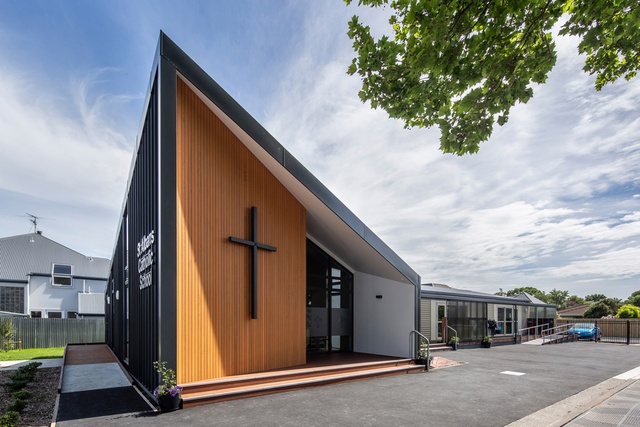
While created as a prototype design, this small building achieves a strong and welcoming presence in its corner location on the school grounds. The dropped roof corner signals human scale, while the high timber wall indicates a formal entrance. Refined detailing, acoustics and the play on geometry create a quiet, soothing space for students, teachers and clergy. The users remark at the immediate calming effect of the space on students, confirming that the architects have met their brief in creating a repeatable design the size of a classroom, but with a remarkably different spatial experience.
The NZIA Architecture Awards programme is supported by Resene and APL.

